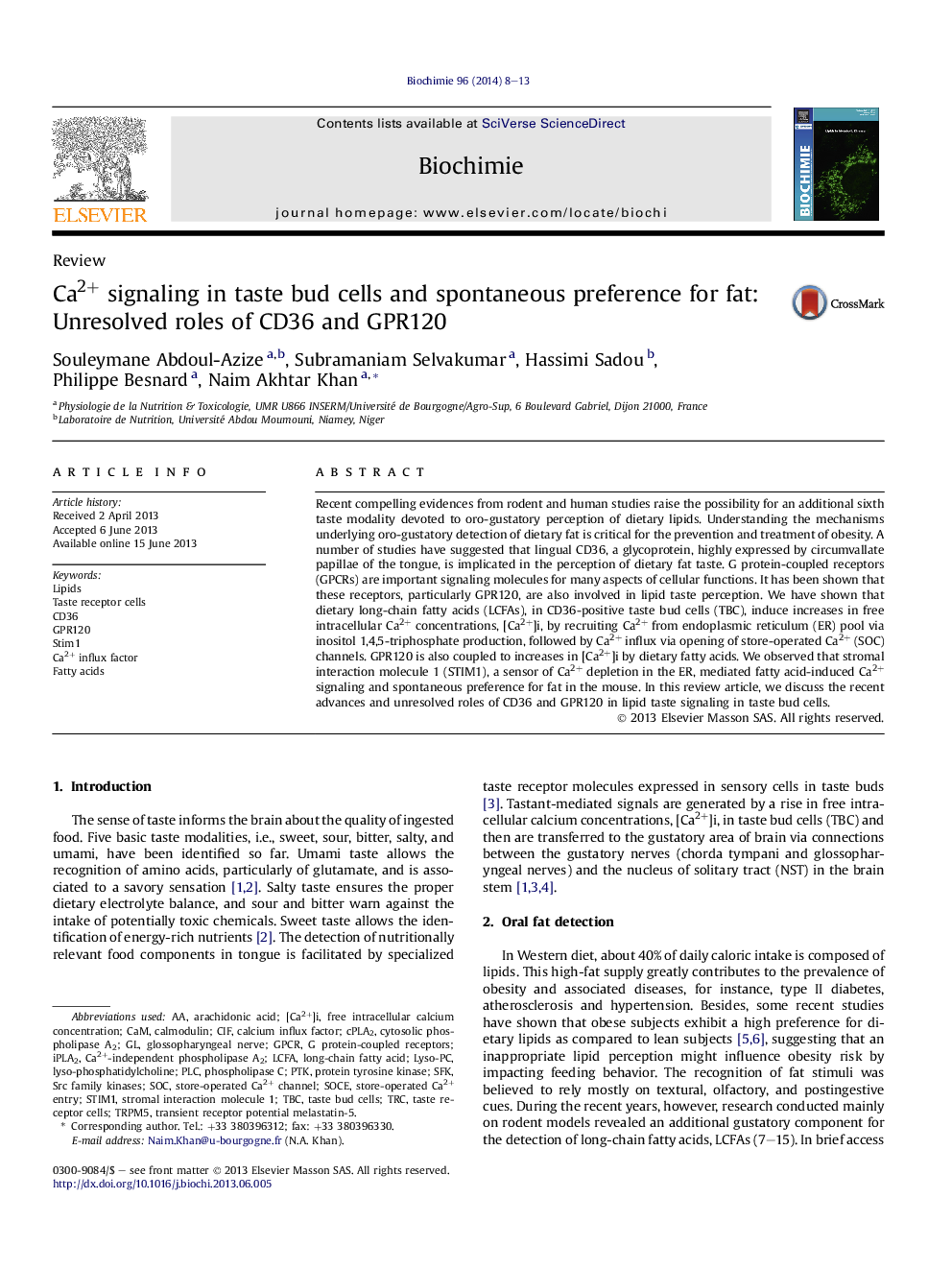| Article ID | Journal | Published Year | Pages | File Type |
|---|---|---|---|---|
| 8305911 | Biochimie | 2014 | 6 Pages |
Abstract
Recent compelling evidences from rodent and human studies raise the possibility for an additional sixth taste modality devoted to oro-gustatory perception of dietary lipids. Understanding the mechanisms underlying oro-gustatory detection of dietary fat is critical for the prevention and treatment of obesity. A number of studies have suggested that lingual CD36, a glycoprotein, highly expressed by circumvallate papillae of the tongue, is implicated in the perception of dietary fat taste. G protein-coupled receptors (GPCRs) are important signaling molecules for many aspects of cellular functions. It has been shown that these receptors, particularly GPR120, are also involved in lipid taste perception. We have shown that dietary long-chain fatty acids (LCFAs), in CD36-positive taste bud cells (TBC), induce increases in free intracellular Ca2+ concentrations, [Ca2+]i, by recruiting Ca2+ from endoplasmic reticulum (ER) pool via inositol 1,4,5-triphosphate production, followed by Ca2+ influx via opening of store-operated Ca2+ (SOC) channels. GPR120 is also coupled to increases in [Ca2+]i by dietary fatty acids. We observed that stromal interaction molecule 1 (STIM1), a sensor of Ca2+ depletion in the ER, mediated fatty acid-induced Ca2+ signaling and spontaneous preference for fat in the mouse. In this review article, we discuss the recent advances and unresolved roles of CD36 and GPR120 in lipid taste signaling in taste bud cells.
Keywords
SFKcalcium influx factorPTKCa2+-independent phospholipase A2iPLA2TRPM5lyso-PCCIFGPR120SOCESTIM1TRCcPLA2PLCTBCLCFAGPCRCD36G protein-coupled receptorsSrc family kinases[Ca2+]iArachidonic acidLong-chain fatty acidFatty acidsCAMtaste receptor cellsSOCtaste bud cellsglossopharyngeal nervefree intracellular calcium concentrationcytosolic phospholipase A2phospholipase CLyso-phosphatidylcholineStromal interaction molecule 1Store-operated Ca2+ entryProtein tyrosine kinaseLipidsCalmodulinStore-operated Ca2+ channel
Related Topics
Life Sciences
Biochemistry, Genetics and Molecular Biology
Biochemistry
Authors
Souleymane Abdoul-Azize, Subramaniam Selvakumar, Hassimi Sadou, Philippe Besnard, Naim Akhtar Khan,
